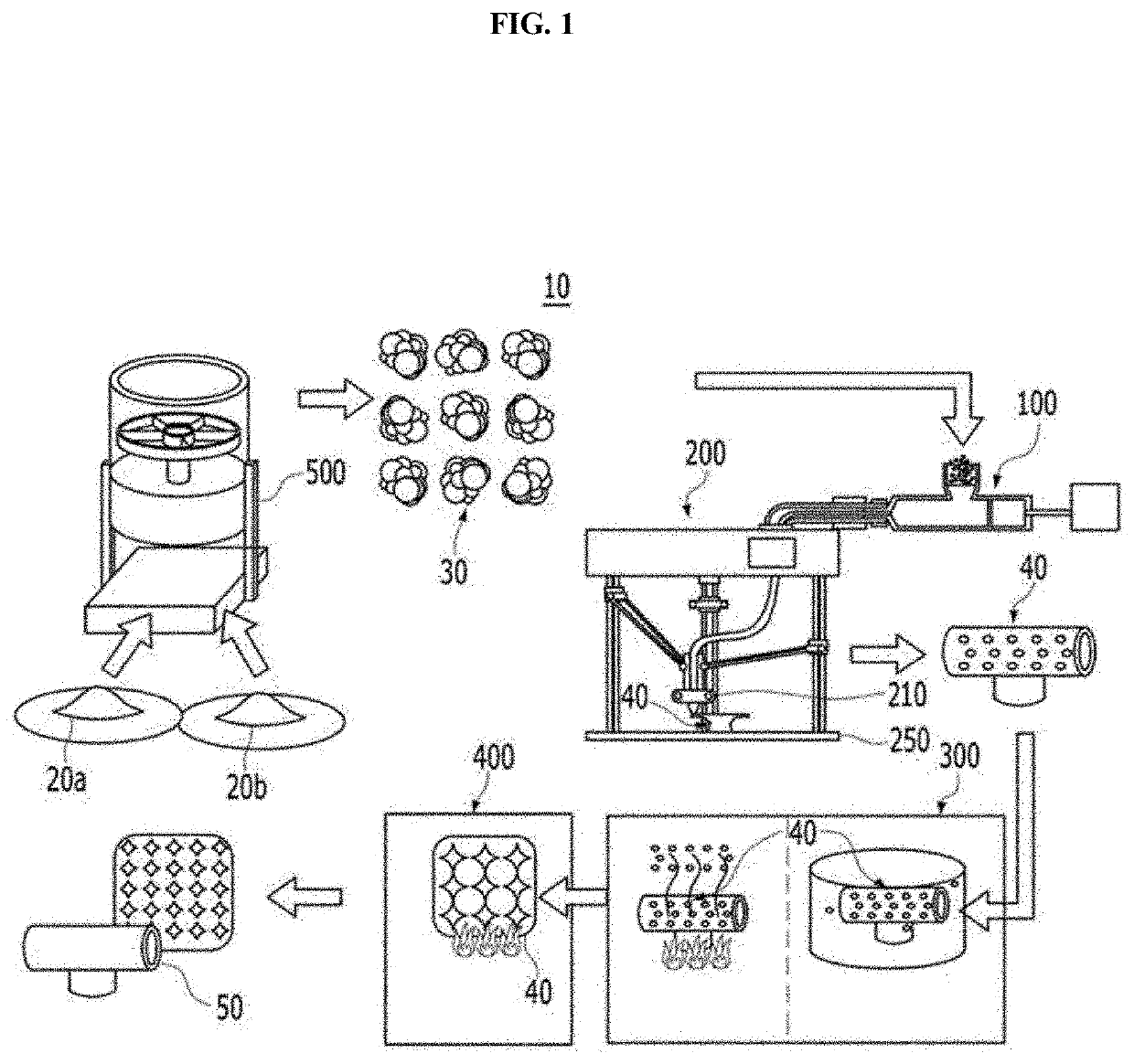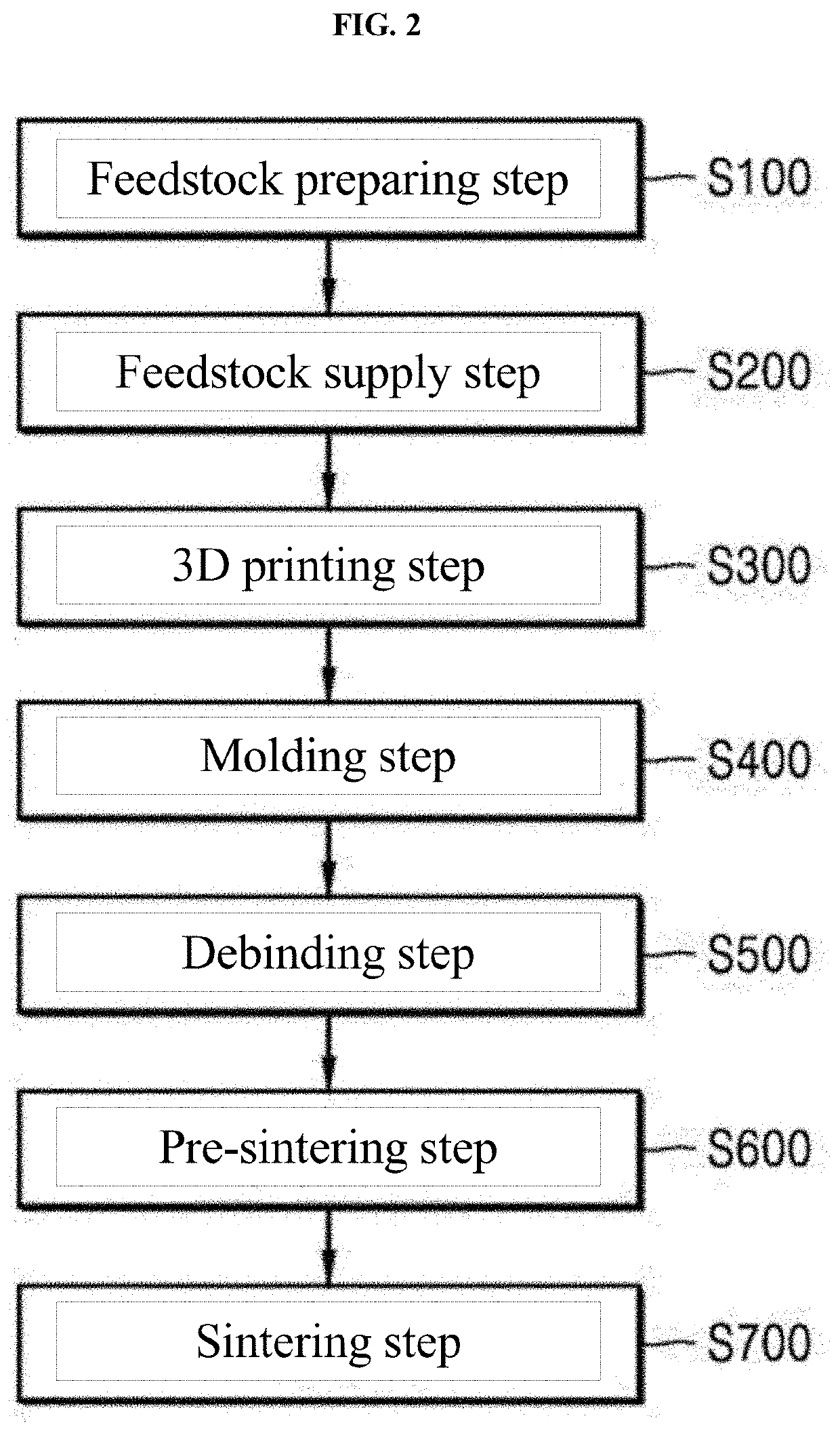Method for manufacturing oxide dispersion strengthened alloy using organic/inorganic mixed composition as raw material
- Summary
- Abstract
- Description
- Claims
- Application Information
AI Technical Summary
Benefits of technology
Problems solved by technology
Method used
Image
Examples
first embodiment
[0086]As a first embodiment, an ODS alloy was prepared using a 3D printing method using an organic-inorganic kneaded composition.
[0087]First, iron, chromium, molybdenum, titanium, zirconium, and yttria powders were prepared using a ball-mill process to prepare ODS mixed powders.
[0088]Specifically, iron, chromium, molybdenum, titanium, zirconium, and yttria in powder form were mixed in the initial stage. In the mixed powder, chromium, molybdenum, titanium, zirconium, and yttria were 14% by weight, 1.0% by weight, 0.1% by weight, 0.25% by weight, and 0.35% by weight, respectively, and the balance was iron powder.
[0089]In the next step, 55 g of the mixed powder and zirconia beads were put into the chamber, and ball-milled at 300 rpm for 48 hours, and a final ODS mixed powders was obtained. FIG. 5 is an optical microscope image of ODS mixed powders.
[0090]The obtained ODS mixed powders was separated by particle sizes using a mesh. The size of the mesh was 325, and the mixed powders were ...
second embodiment
[0102]As a second embodiment, an ODS alloy was produced using a metal injection molding (MIM) method using an organic-inorganic kneaded composition. In the case of the second embodiment, the molding of the ODS alloy was carried out in substantially the same manner as in the first embodiment, except that the molding of the ODS alloy was performed using a metal injection molding unit. In this second example, the general sintering temperature was divided at 1150° C., 1250° C. and 1300° C. like the first embodiment. Specimens sintered at 1150° C., 1250° C. and 1300° C. are designated as Specimen 4, Specimen 5 and Specimen 6, respectively.
[0103]FIGS. 7A to 7C show the results of observing the microstructures of Specimens 4 to 6 on which general sintering was completed with an optical microscope. Referring to FIGS. 7A and 7B, it can be seen that in the case of specimens 4 and 5 sintered at 1150° C. and 1250° C., the bonding among the powders is not dense, and there are significant voids b...
PUM
| Property | Measurement | Unit |
|---|---|---|
| Temperature | aaaaa | aaaaa |
| Temperature | aaaaa | aaaaa |
| Temperature | aaaaa | aaaaa |
Abstract
Description
Claims
Application Information
 Login to View More
Login to View More - R&D
- Intellectual Property
- Life Sciences
- Materials
- Tech Scout
- Unparalleled Data Quality
- Higher Quality Content
- 60% Fewer Hallucinations
Browse by: Latest US Patents, China's latest patents, Technical Efficacy Thesaurus, Application Domain, Technology Topic, Popular Technical Reports.
© 2025 PatSnap. All rights reserved.Legal|Privacy policy|Modern Slavery Act Transparency Statement|Sitemap|About US| Contact US: help@patsnap.com



